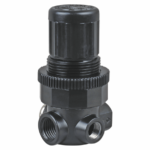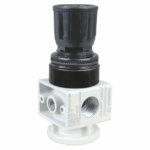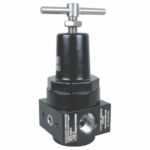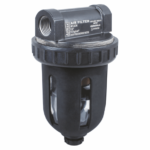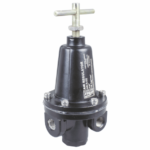Pneumatic Cylinder Speed Control: Flow Control Valves, Regulators & Tips

In any pneumatic system, speed control isn’t just about efficiency; it’s about safety, productivity, and precision. Whether you’re running an automated assembly line or managing motion control in a packaging unit, pneumatic cylinder speed control plays a major role in optimizing performance. By managing airflow, pressure, and load balance, manufacturers like Airmax Pneumatics Ltd ensure smooth, reliable operations in even the most demanding environments.
How to Control Pneumatic Cylinder Speed
The speed of a pneumatic cylinder depends primarily on how fast air enters and exits the cylinder chambers. To control pneumatic cylinder speed, a combination of flow control valves and pressure regulators is used. These components manage the volume and rate of air movement, enabling users to fine-tune operations according to application needs.
If not controlled properly, pneumatic cylinders may move too fast, leading to wear and tear or even accidents. That’s why using quality components from trusted manufacturers like Airmax Pneumatics Ltd is critical for both safety and efficiency.
Factors Affecting Air Cylinder Speed Control
Several mechanical and operational factors impact how a pneumatic cylinder behaves during operation:
- Supply Pressure: Higher pressure increases speed but can cause jerky movement if uncontrolled.
- Load Conditions: Heavier loads can cause the cylinder to slow down and require more precise regulation.
- Cylinder Bore and Stroke: Larger bores move more air, affecting speed. Stroke length influences total travel time. To better understand how bore size affects performance, check our guide on how to measure pneumatic cylinder bore size. Similarly, stroke length determines total travel time – you can calculate the stroke length of a pneumatic cylinder based on your application’s movement requirements.
- Friction and Seal Drag: Worn-out seals or poorly lubricated surfaces increase resistance, affecting performance.
Understanding these factors helps in selecting the right speed control solutions for specific applications.
Pneumatic Cylinder Speed Control Valves: Types and Applications
Airmax Pneumatics Ltd offers a wide range of valves designed specifically for air cylinder speed control. Below are some of the key components:
1. Meter-In vs. Meter-Out Circuits:
Meter-In Circuit: Controls incoming air to the cylinder. Ideal for load-resisting movements.
Meter-Out Circuit: Controls exhaust air. Best for controlling speed during the return stroke or with dynamic loads.
2. Needle Valve:
A basic and effective solution for controlling air flow, needle valves adjusts the rate of flow in one direction. Airmax offers durable, easy-to-operate needle valves perfect for standard speed control setups.
3. Check Valve with Flow Control:
Combines one-way airflow with adjustable reverse flow. This is useful when you want free flow in one direction and controlled flow in the other, ideal for double-acting cylinders.
4. Quick Exhaust Valve:
Quick exhaust valve rapidly releases air from the cylinder, increasing stroke speed. These are perfect for applications requiring fast retraction or extension of the cylinder.
Supportive Components from Airmax Pneumatics:
- Non-Return Valve: Prevents reverse flow of air, maintaining system integrity.
- Shuttle Valve: Selects between two sources of pressure automatically. Ideal in safety and dual-control setups.
Pressure Regulators: Keeping It Steady
Pressure regulators are essential for maintaining a consistent operating pressure, which directly impacts speed and stability. There are two primary types:
- Airline Regulators: Installed in the main air supply line, these regulate pressure for the entire system.
- Cylinder-Mounted Regulators: Installed directly on the actuator to provide localized pressure control.
Common Mistakes to Avoid in Pneumatic Speed Control
Even the best components can fail if not used correctly. Here are a few common errors:
- Over-restricting airflow: This causes pressure drops and sluggish movement.
- Ignoring backpressure: Can affect return stroke speed and lead to jerky operation.
- Incorrect valve placement: Valves must be positioned strategically for best results. For example, placing a flow control valve too far from the cylinder can reduce its effectiveness.
Working with a trusted supplier like Airmax Pneumatics Ltd helps ensure you get not only high-quality products but also expert guidance on proper installation.
Conclusion
Controlling the speed of a pneumatic cylinder is more than just tweaking a valve; it’s about creating a reliable, consistent, and safe system. With the right combination of pneumatic cylinder speed control valves, regulators, and setup techniques, you can dramatically improve the performance of your pneumatic systems.
Backed by decades of engineering excellence, Airmax Pneumatics Ltd offers one of the most reliable and performance-driven ranges of pneumatic valves and accessories. From needle valves to quick exhaust valves, every component is designed to deliver durability, precision, and control, so your operations never miss a beat.

